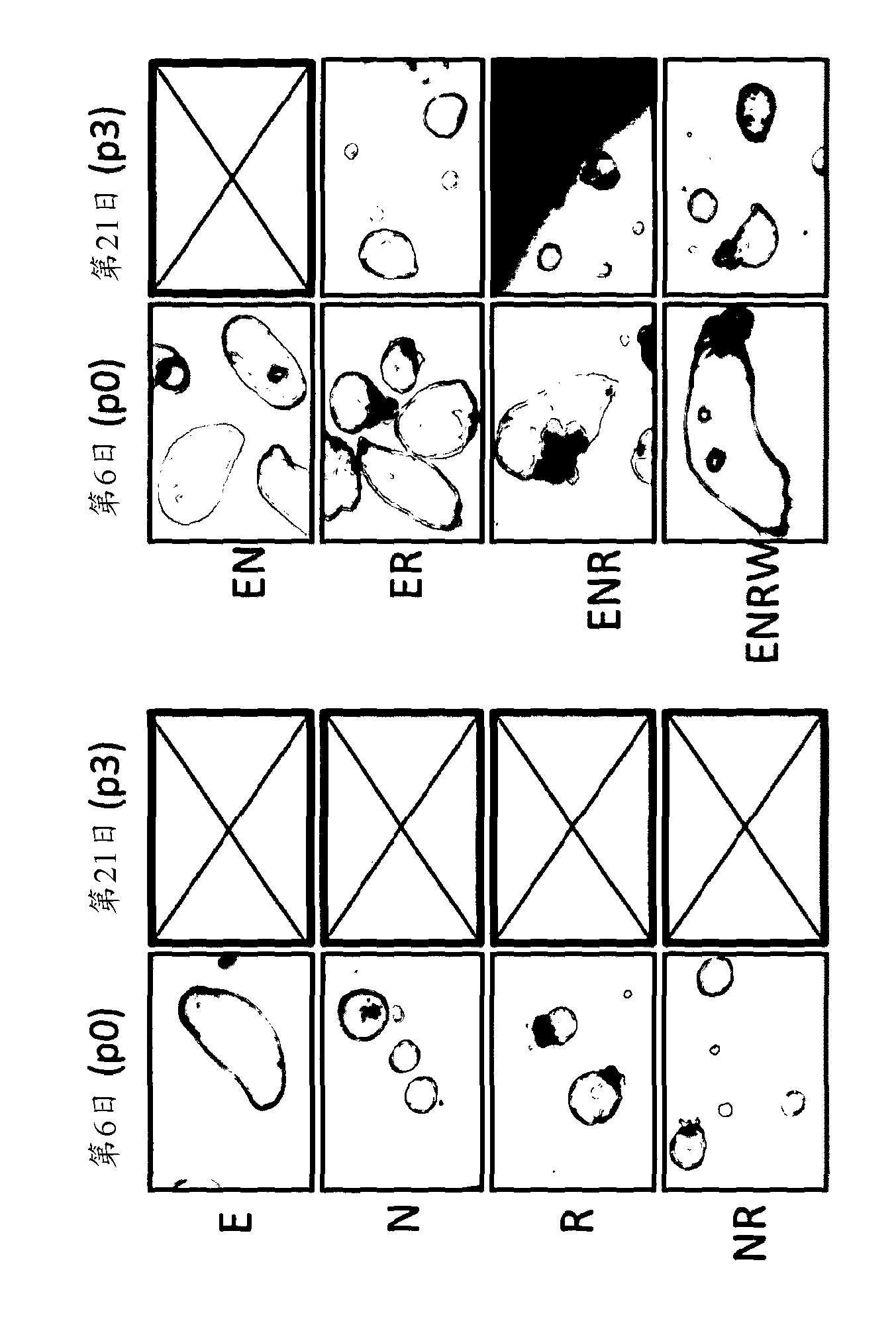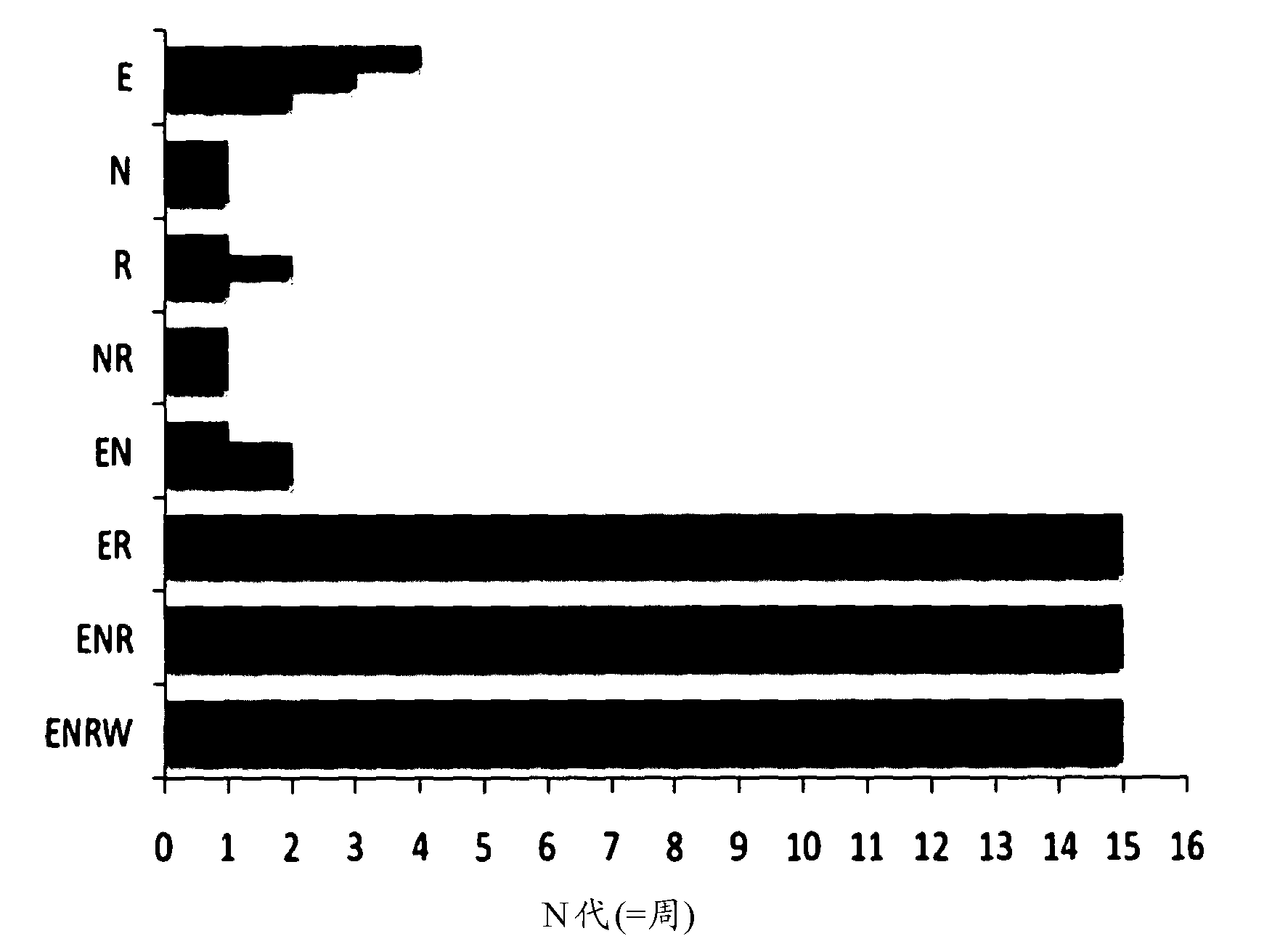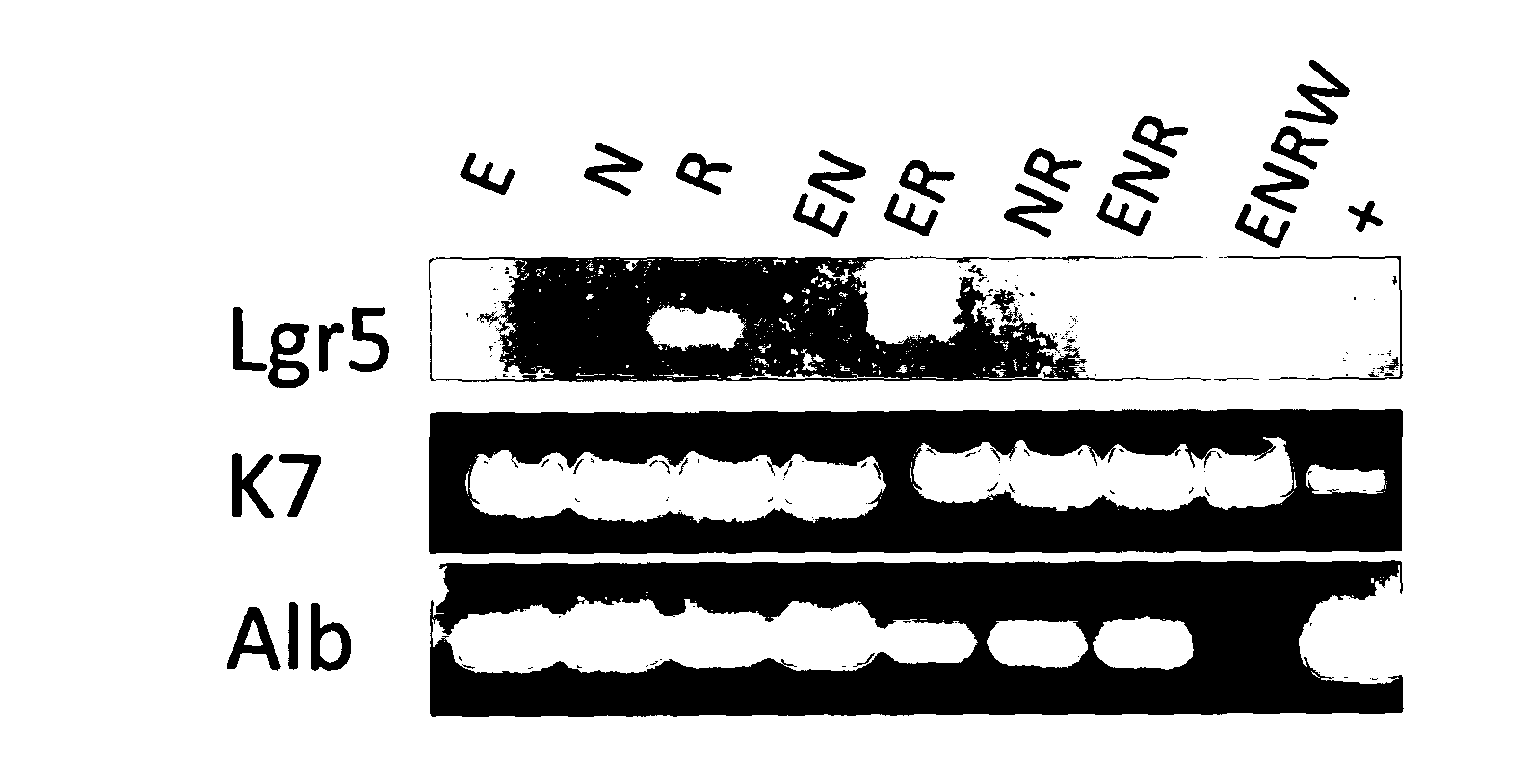Liver organoid, uses thereof and culture method for obtaining them
An organoid, liver technology, applied in the culture process, tissue culture, cell culture active agent, etc.
- Summary
- Abstract
- Description
- Claims
- Application Information
AI Technical Summary
Problems solved by technology
Method used
Image
Examples
Embodiment Construction
[0014] In a first aspect, the present invention provides a method of obtaining and / or culturing liver fragments or liver organoids, wherein the method comprises:
[0015] Epithelial stem cells and / or isolated tissue fragments containing said epithelial stem cells are cultured in contact with an extracellular matrix in the presence of a medium comprising minimal medium for animal or human cells supplemented with : epidermal growth factor and FGF as mitogenic growth factors capable of binding to FGFR2 or FGFR4 and preferably FGF10, nicotinamide, and preferably a Wnt agonist, preferably R-spondin1, R-spondin2, R-spondin3 or R-spondin4 and / or Wnt-3a. Preferably, HGF is also added.
[0016] For example, in one embodiment, the invention provides a method of obtaining and / or culturing a liver fragment or an organoid of the liver, wherein the method comprises:
[0017] Epithelial stem cells and / or isolated tissue fragments containing said epithelial stem cells are cultured in contac...
PUM
 Login to View More
Login to View More Abstract
Description
Claims
Application Information
 Login to View More
Login to View More - R&D
- Intellectual Property
- Life Sciences
- Materials
- Tech Scout
- Unparalleled Data Quality
- Higher Quality Content
- 60% Fewer Hallucinations
Browse by: Latest US Patents, China's latest patents, Technical Efficacy Thesaurus, Application Domain, Technology Topic, Popular Technical Reports.
© 2025 PatSnap. All rights reserved.Legal|Privacy policy|Modern Slavery Act Transparency Statement|Sitemap|About US| Contact US: help@patsnap.com



